Science Drawing for Kids Body System
Help kids explore how the human body works with these fun and gratis beefcake activities. They're terrific for hands-on learning at home or in the classroom, and can be differentiated for a wide variety of grades and skill levels. Information technology's time to learn about heads, shoulders, knees, and toes… and everything in between!
one. Lay out a life-sized beefcake model
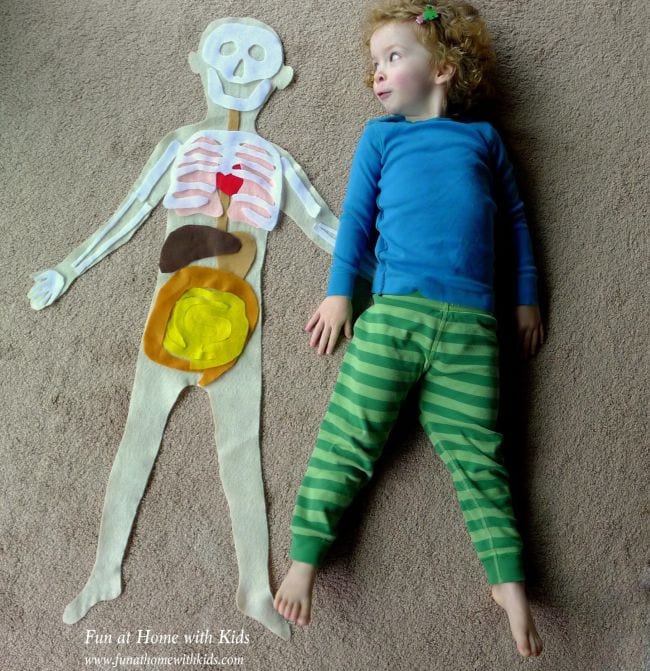
Make an outline of each child'south trunk from paper (or felt, for a reusable version). Then add the various bones, muscles, organs, and more as yous learn about them. Kids beloved this anatomy project!
Learn more: Fun at Home With Kids
2. Read books about the human trunk
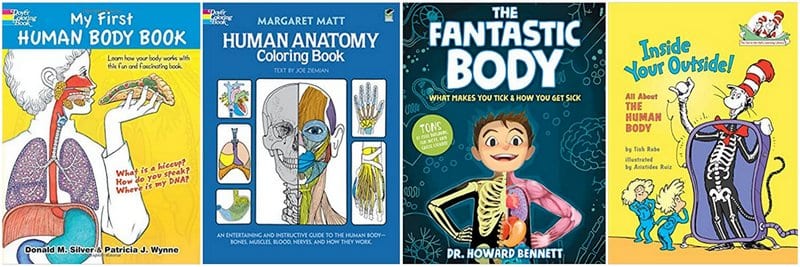
Try a fun read-aloud or pull pages from a coloring book for kids to explore. Here are some of our favorite anatomy and homo trunk books.
- My Get-go Human Body Book (Wynne/Silverish)
- Human Beefcake Coloring Volume (Matt/Ziemian)
- The Fantastic Body (Bennett)
- Within Your Outside! (Rabe/Ruiz)
iii. Sculpt Play-Doh bodies
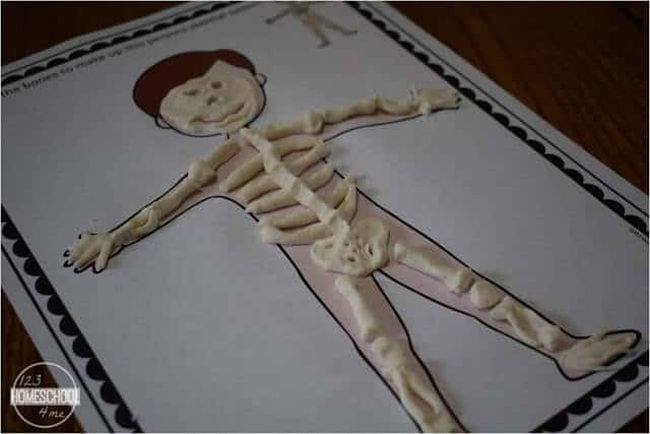
Grab the gratis printable mats at the link, and so accept kids make basic, musculus groups, organs, and other body parts using Play-Doh.
Learn more: 123Homeschool4Me
four. Assemble a pasta skeleton
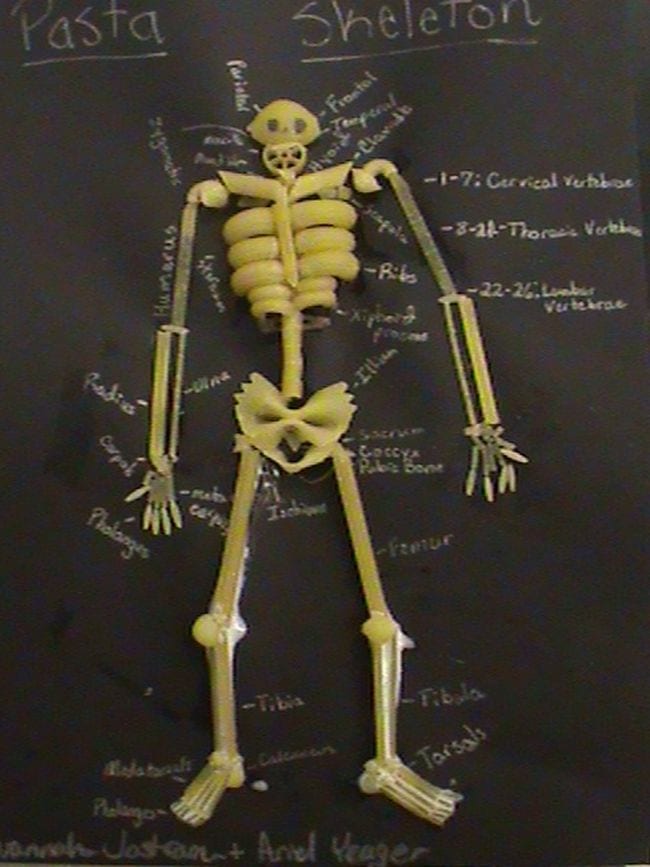
How absurd is this! Assemble up a variety of pasta from macaroni to orzo and utilize them to create a pasta skeleton. It'south amazing how existent information technology looks!
Learn more: Ms. Palmer's Classroom
5. Learn the names of the bones
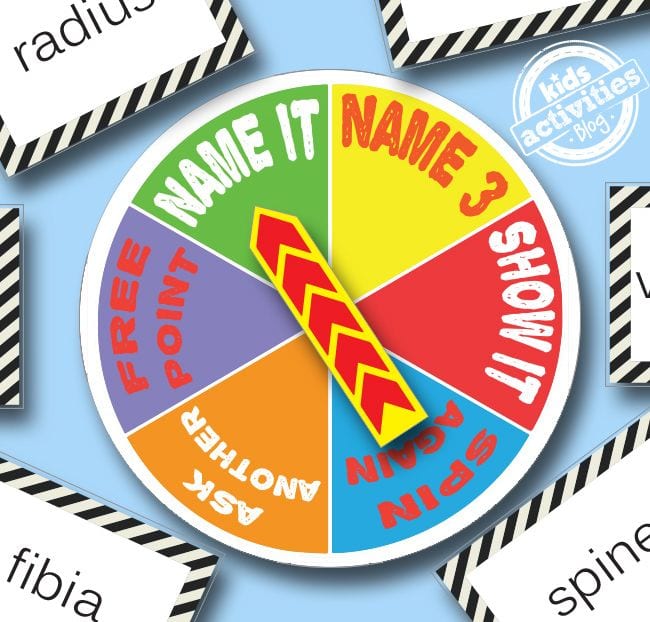
This free printable game challenges kids to proper noun and point out the major bones of the torso. This one is dandy for agile learners.
Learn more than: Kids Activities Web log
half-dozen. String an edible spinal column
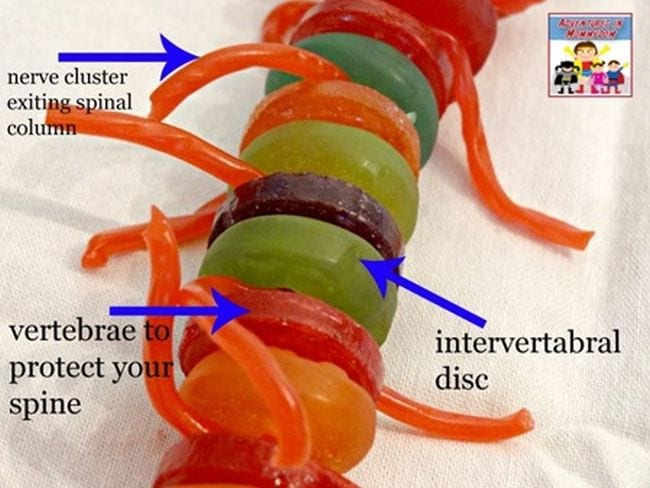
This anatomy project gives kids a model spinal cord and a sweet treat all in one! Use hard and gummy Life Savers to represent vertebrae and discs … and then clever!
Learn more: Adventures in Mommydom
7. Movement model muscles
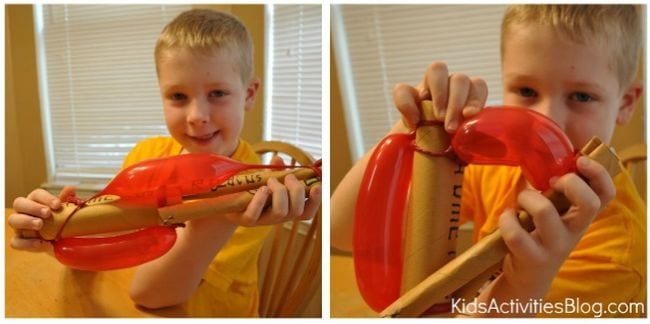
With cardboard tubes for bones and balloons for muscles, this DIY model shows kids how the 2 work together to let your body to move.
Larn more than: Kids Activities Blog
8. Add Play-Doh muscles to toy skeletons
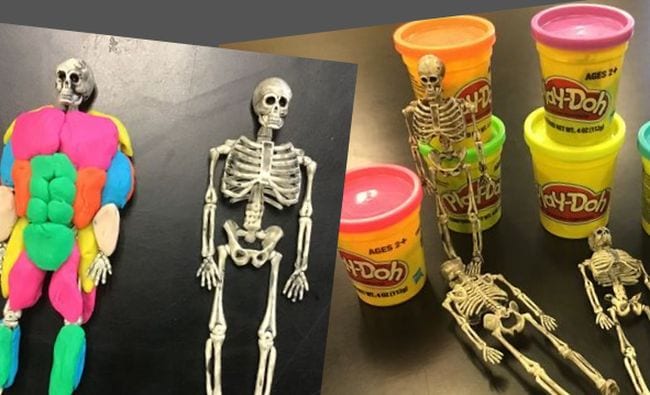
Snag some toy skeletons from the dollar store around Halloween. Then use Play-Doh to add together and learn the major muscle groups.
Larn more: Teach Every Solar day
ix. Construct a model hand
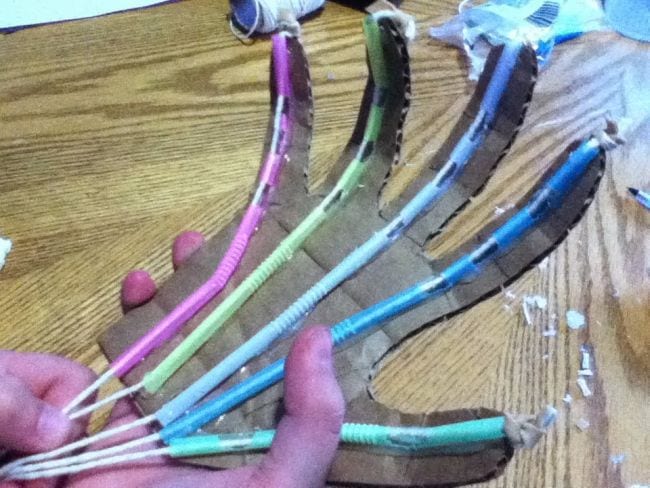
This is a perennial favorite beefcake projection. Use string, drinking straws, and paper-thin to create a working model of the hand. Learn how it's done at the link.
Acquire more: A Class of One
10. Mix up a blood model
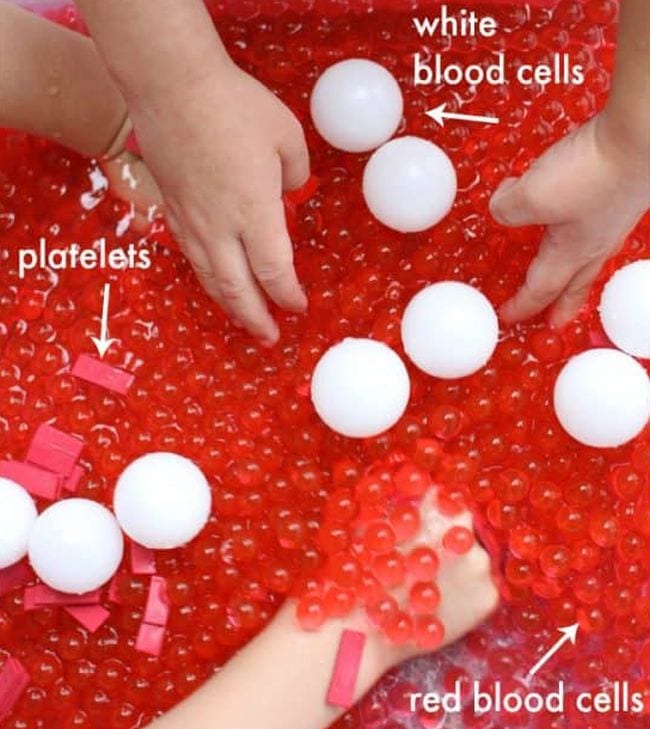
There's a lot more to blood than meets the middle! Utilise h2o chaplet, ping pong balls, and foam strips to represent the various blood components in this like shooting fish in a barrel activeness.
Learn more: I Can Teach My Child
11. Play The Circulation Game
The circulatory organization moves blood around the body, supplying oxygen and other nutrients to each body part. Play this life-sized free printable game to larn how it works.
Learn more: Ellen McHenry'south Basement Workshop
12. Notice cell osmosis with eggs
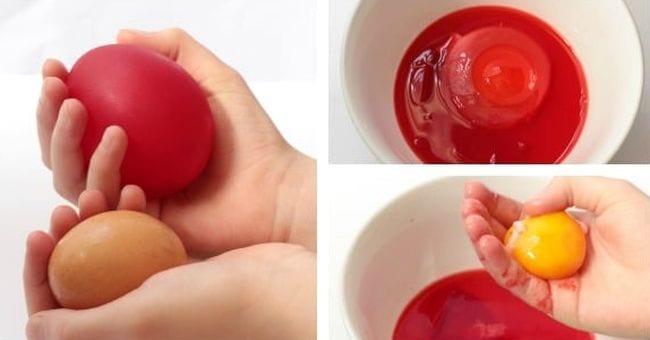
This demo uses the archetype "naked egg" experiment to demonstrate how blood cells utilize osmosis to absorb oxygen and nutrients. It never fails to impress!
Learn more: Steamsational
13. Heed to your heart with a DIY stethoscope
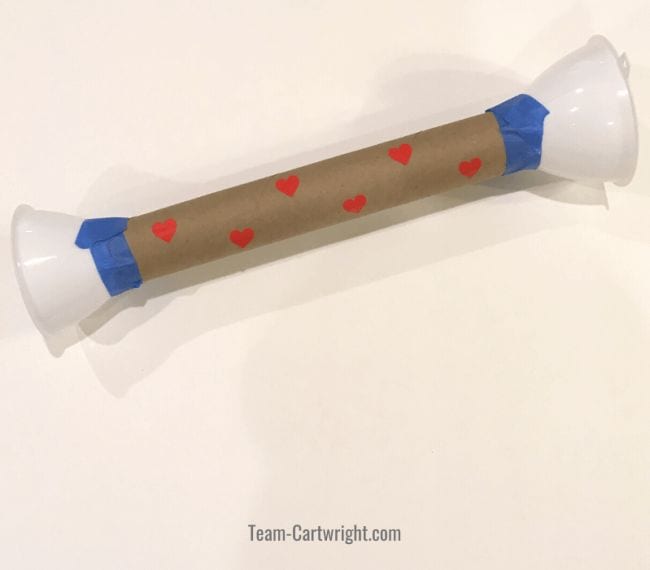
Brand your own stethoscope from a paper-thin tube and plastic cups. This version is surprisingly like to the early tools used by doctors in the 19th century.
Acquire more than: Team Cartwright
14. Pump a working eye model
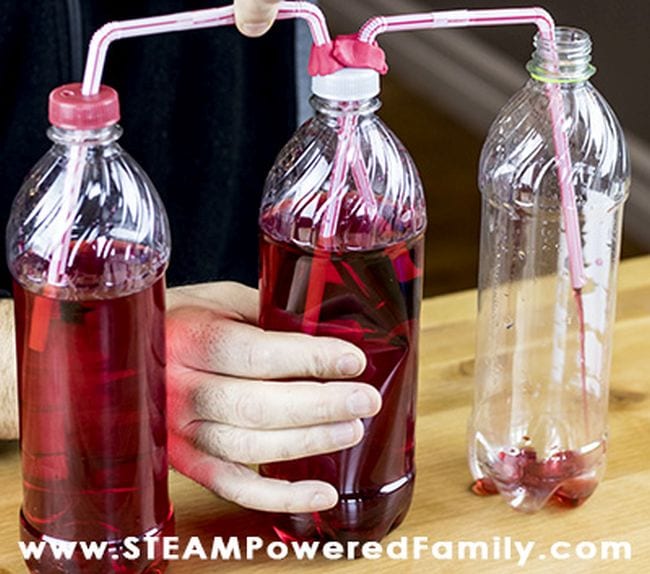
Learn how the heart pumps blood to understand why this organ is the most vital i of all. This projection takes but a few simple supplies and is fascinating in action.
Learn more: STEAM Powered Family
15. Construct model lungs
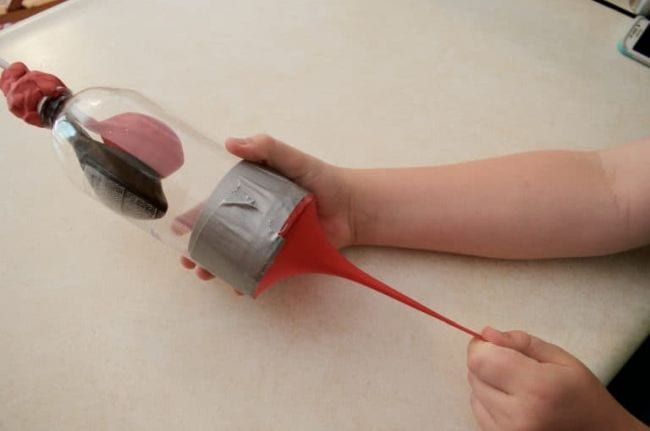
We know that when we exhale, our lungs fill with air. But how exactly does it get there? This clever model demonstrates the importance of the diaphragm. It as well includes a meaningful lesson on the dangers of smoking.
Acquire more: Surviving a Teacher'due south Salary
16. Wear a digestive organisation shirt
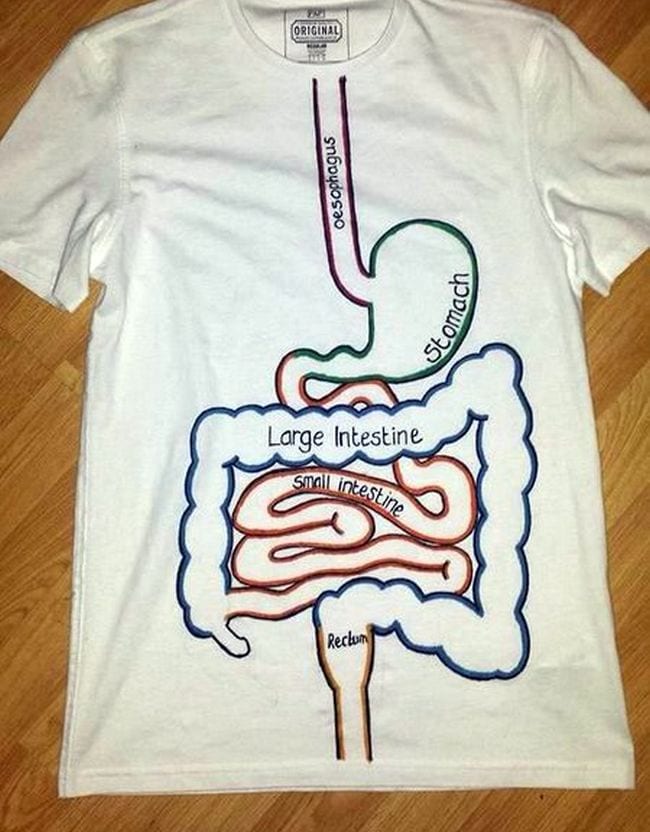
Brand information technology easy for kids to imagine what'due south going on within with a fun DIY t-shirt! Create an atomic number 26-on, or have kids trace or draw the organs with puffy fabric paint.
Learn more: Molly Cribbin/Pinterest
17. Use lemon juice to simulate stomach acid
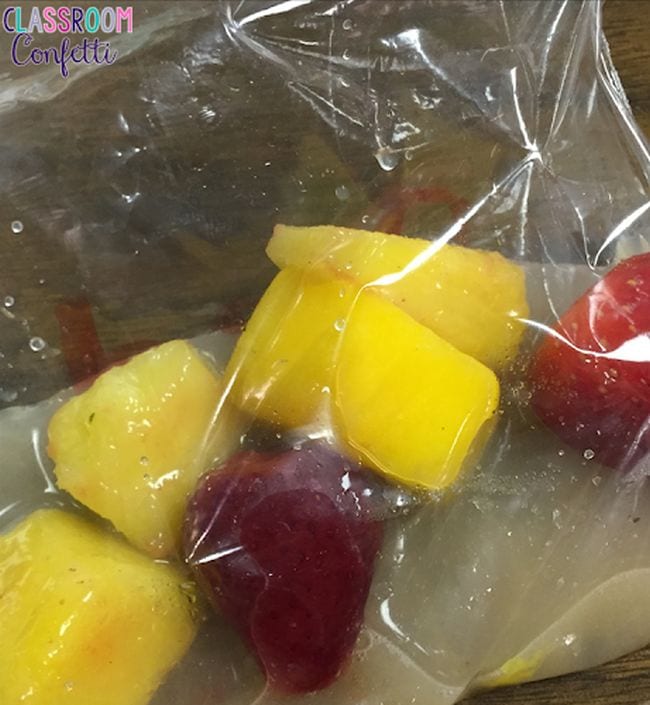
Our stomach breaks down the food we eat… simply how? The acids in lemon juice or vinegar demonstrate the digestive process in activeness.
Learn more: Classroom Confetti
18. See how bile breaks down fatty
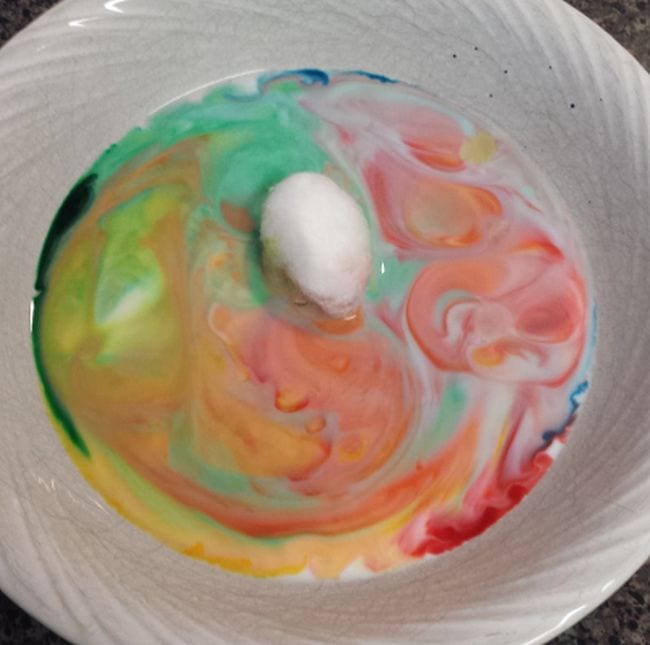
The liver produces bile, which helps to break down the fats we swallow. This quick experiment uses dish soap and milk to bear witness how the process works.
Learn more: Uncomplicated Southern
19. Find out how long small intestines really are
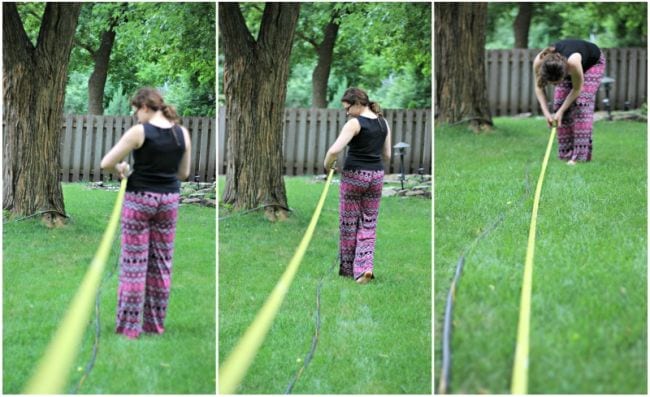
Did you lot know the small intestine is about 22 feet long? Really! Mensurate out that length using a garden hose to run across only what that distance actually looks like.
Acquire more: Edventures With Kids
20. Brand a model of the kidneys and float
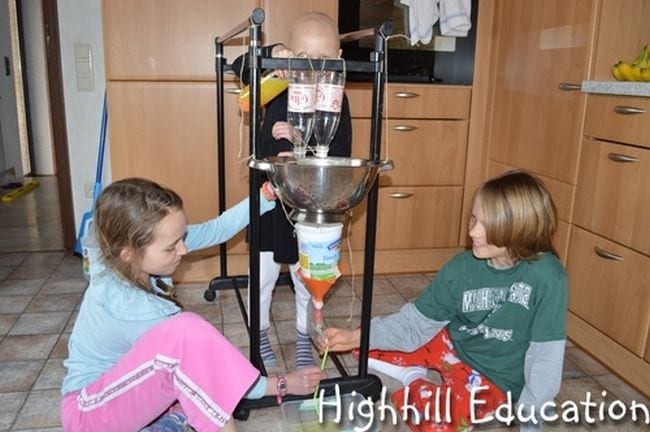
See the urinary tract in activity with this model. It takes a little time to prepare but gives kids a take a chance to run into how the kidneys, bladder, and other renal organisation parts perform.
Learn more: Highhill Education
21. Don a brain hat
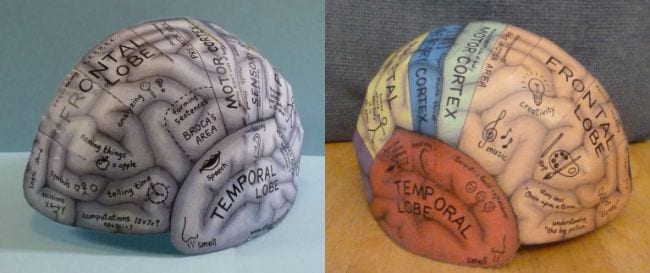
It'south endlessly fascinating to acquire about the different parts of the brain and what they control. That's why kids volition love these free printable brain hats! (They give a whole new significant to "Put on your thinking caps.")
Learn more: Ellen McHenry'due south Basement Workshop
22. Protect egg "brains" with fluid

It'southward a foreign idea, but our brains motion around inside the skull. What protects them from banging up confronting the skull and being damaged? That's where the cerebrospinal fluid comes in. Try this quick anatomy demo to see why information technology helps.
Learn more: Life With My Giggly Girls
23. Mold a Play-Doh brain prison cell
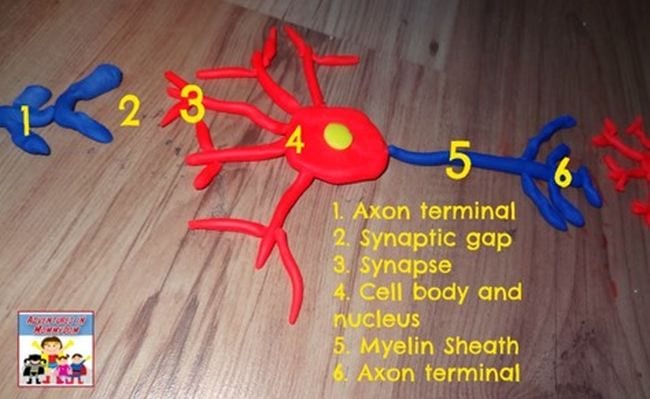
Not surprisingly, brain and nervous system cells are complicated. Make a model from Play-Doh to encounter all the dissimilar parts, and acquire how they communicate with each other through electric impulses.
Learn more: Adventures in Mommydom
24. Use a balloon to brand a model middle
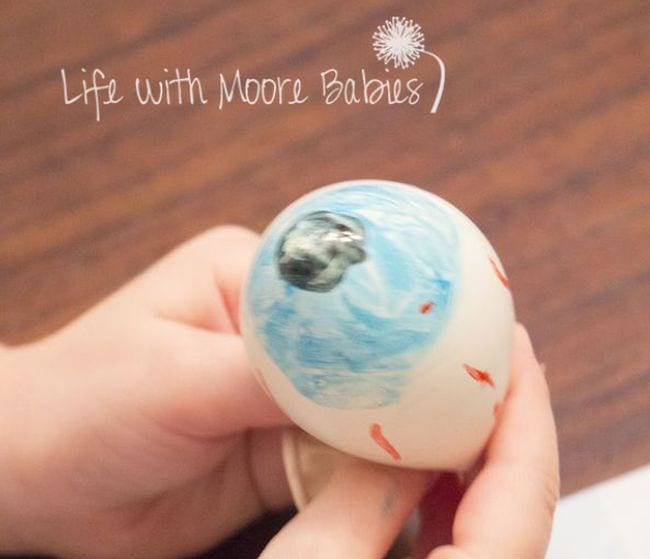
The eye is another incredibly complex part of our anatomy, merely you can make a realistic model from unproblematic supplies like a balloon and vegetable oil.
Learn more: Life With Moore Learning
25. Explore the beefcake of the ear
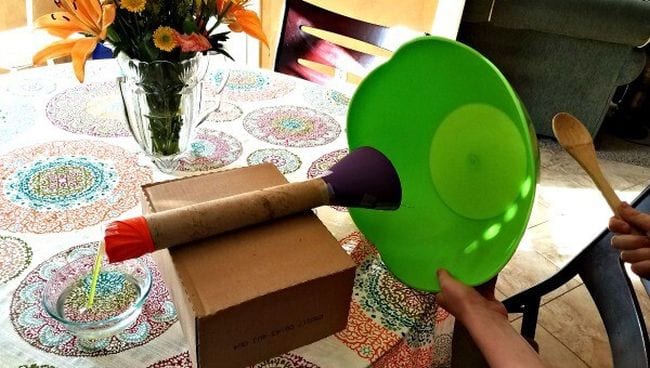
This may not look exactly similar an ear, but it's a dandy way to understand how the eardrum gathers sounds and sends them on to the brain.
Learn more: 123Homeschool4Me
26. Put together candy Deoxyribonucleic acid models
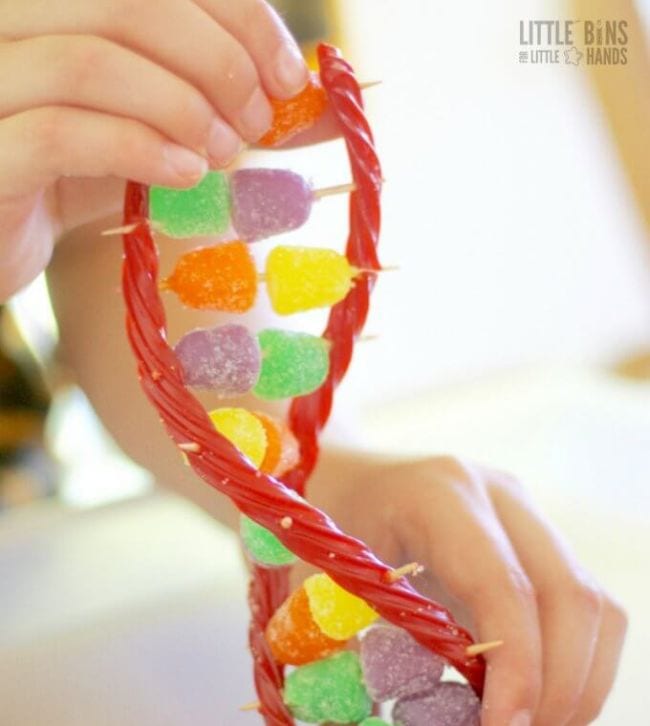
DNA is the building block of life, and it'south found in every function of our anatomy. Brand a model from licorice and gumdrops to learn more about this crucial material.
Learn more than: Little Bins for Fiddling Hands
Build on your anatomy lessons with 20 Costless and Fun Five Senses Activities.
Plus, 20 of the All-time Scientific discipline Bulletin Boards and Classroom Decor Ideas.

Source: https://www.weareteachers.com/anatomy-activities/
0 Response to "Science Drawing for Kids Body System"
Post a Comment